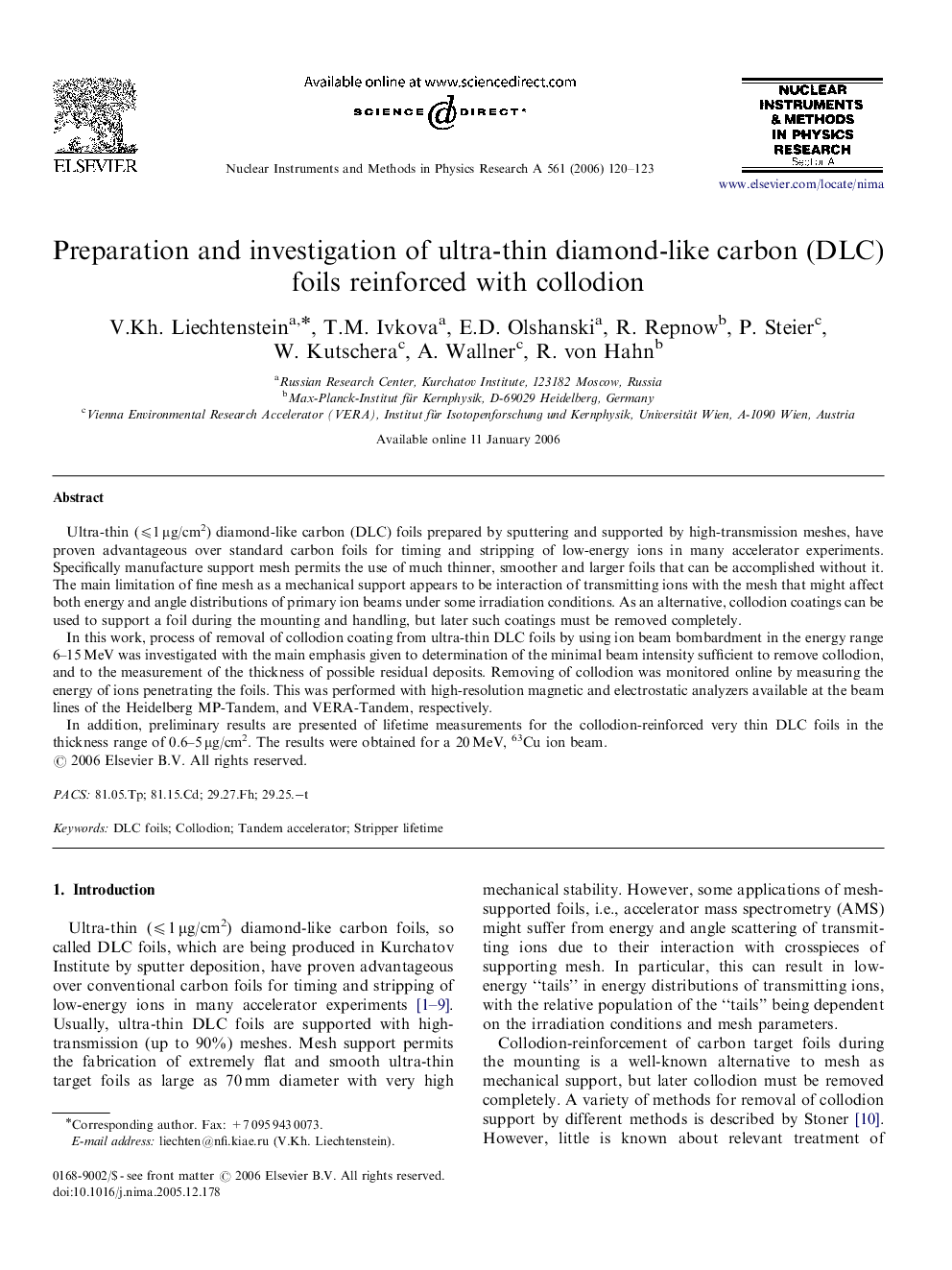| Article ID | Journal | Published Year | Pages | File Type |
|---|---|---|---|---|
| 1833309 | Nuclear Instruments and Methods in Physics Research Section A: Accelerators, Spectrometers, Detectors and Associated Equipment | 2006 | 4 Pages |
Ultra-thin (⩽1 μg/cm2) diamond-like carbon (DLC) foils prepared by sputtering and supported by high-transmission meshes, have proven advantageous over standard carbon foils for timing and stripping of low-energy ions in many accelerator experiments. Specifically manufacture support mesh permits the use of much thinner, smoother and larger foils that can be accomplished without it. The main limitation of fine mesh as a mechanical support appears to be interaction of transmitting ions with the mesh that might affect both energy and angle distributions of primary ion beams under some irradiation conditions. As an alternative, collodion coatings can be used to support a foil during the mounting and handling, but later such coatings must be removed completely.In this work, process of removal of collodion coating from ultra-thin DLC foils by using ion beam bombardment in the energy range 6–15 MeV was investigated with the main emphasis given to determination of the minimal beam intensity sufficient to remove collodion, and to the measurement of the thickness of possible residual deposits. Removing of collodion was monitored online by measuring the energy of ions penetrating the foils. This was performed with high-resolution magnetic and electrostatic analyzers available at the beam lines of the Heidelberg MP-Tandem, and VERA-Tandem, respectively.In addition, preliminary results are presented of lifetime measurements for the collodion-reinforced very thin DLC foils in the thickness range of 0.6–5 μg/cm2. The results were obtained for a 20 MeV, 63Cu ion beam.
